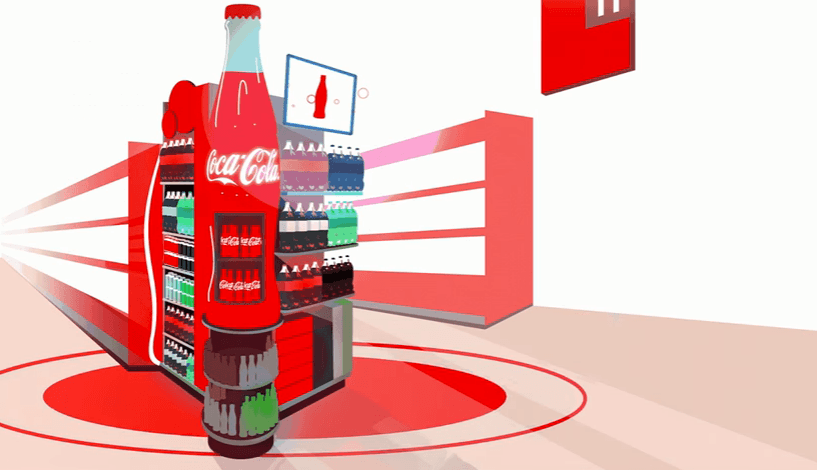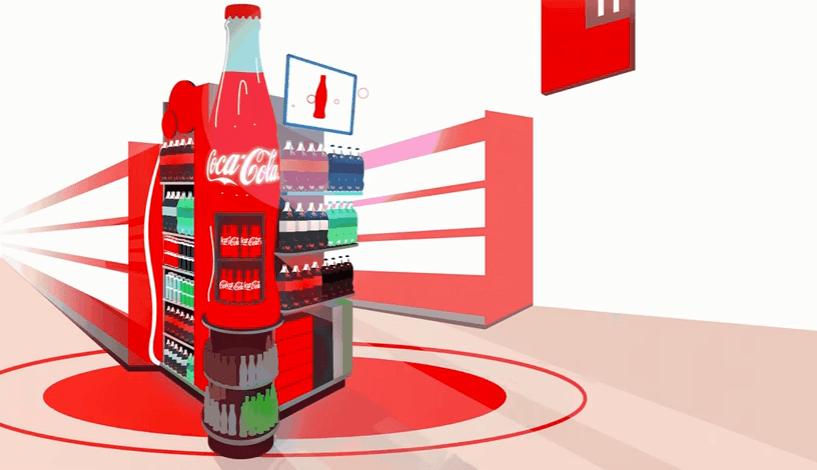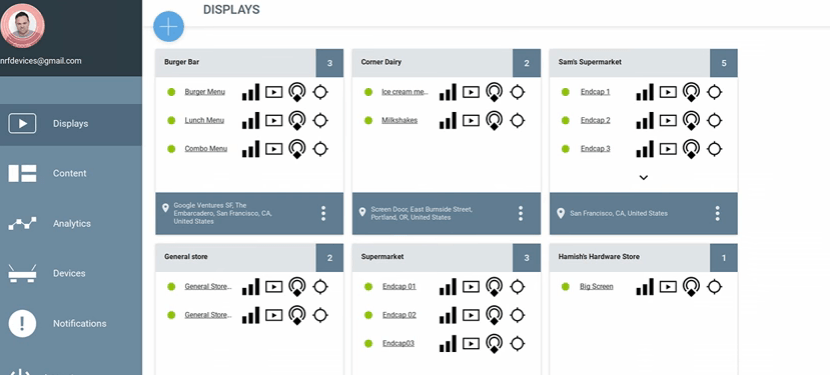
Coca-Cola Rolling Out Digital Display Networks All Running Off Google ChromeOS And Cloud Tools
March 16, 2017 by Dave Haynes

I have a clear memory from two years ago of walking over to see the Google booth at Digital Signage Expo, and seeing three very smart, senior industry guys standing there taking it in from one corner – two of them looking somewhere between amused and disdainful.
The third guy, who I chatted with after the other two wandered off, agreed with me that it was not a great idea to write Google off as just another giant company sticking its nose into a relatively teeny niche business. Google and Cisco are just different.
I’ve felt as far back as 2010 that Google had a potential role in this sector, and that it wasn’t going to be writing its own competing content management platform.
In Google’s world, digital signage remains a tiny piece of the company’s overall activities, and there are only a handful of people with Google business cards actively working the digital signage file everyday. But they also have 1,000s of software engineers who are developing and evolving tools that can be applied to signage activities. They have Adsense. They have Google Analytics. Cloud hosting. On and on.
I mention this because I watched a video online yesterday that had me doing a slow, steady Holy Shit. It was interesting to hear about Toyota working across Europe with Google on a ChromeOS-driven sign network in 3,600 dealers. But it was really, really, really interesting to watch a presentation by Greg Chambers, the Global Group Director for Digital Innovation at Coca-Cola, talking about a full-on integration with Google’s cloud tools for digital end-caps, digital menu-boards and digital cinema posters.
One of the world’s biggest brands started working with Google two years ago and has gone through several iterations of a Chromebit-driven digital end-cap for grocery, and has written software that works with Google Analytics and the ad-serving software DoubleClick, with devices running on ChromeOS and using Google’s Chrome Device Management toolset.
The really interesting thing to me is that DoubleClick, which has a vast user base for serving digital ads, is effectively the content management system – flighting and targeting ad messages, handling previews and approvals, and spitting out reports, which can then be mapped against what Google Analytics reports.
Coca-Cola deals with some 200 agencies active in digital, says Chambers. “Every single one of them already knows how to flight content in DoubleClick. There’s no learning curve, no training, no videos to watch,” he says. “They already know how to use it.”
The end-caps, in real world testing, delivered a one month ROI on the various costs of sticking them in. They sold more of what was promoted on the screen, but they also sold more of the other Coca-Cola products down that soft drink aisle, says Chambers. The rollout is past 100 stores in a national chain (think it is Albertson’s) and will expand in v.2 this spring.
Coca-Cola used to help out mom and pop and smaller chain restaurants with some of their capital costs, by providing them with Coca-Cola branded menu displays. Now the brand sees the opportunity to go back to that with digital menu-boards it would put in, because they can ensure the representation of the brand on the screen is done right and things like nutritional information is accurate.
Chambers says research suggests a menu-board install costs about $40,000, which he says is crazily high and which I say just seems high, period. I’d think half that, on the high end. Whatever the case, he says Coke can bring that down by 90%, to something like $4,000, using Chromebits or Chromeboxes, I’m guessing, and volume pricing on smaller 16/7 or prosumer panels (also a guess).

Coca-Cola’s signage management tool
The various systems are married with Google’s Eddystone version of beacons, which are built into ChromeOS devices and pop messages with URLs on the notification layer of phones. That gets married, notably in the cinema displays model, with e-commerce tools, so people can see a food prompt off a digital movie poster, and order and pay for Cokes and popcorn off a smartphone and go straight to a concession pick-up counter, avoiding lineups.
The cinema stuff will get talked up in a couple of weeks at Cinemacon in Las Vegas, which is on at the same time as DSE.
This video, from the recent Google Cloud Next conference in San Francisco, struck me for a few reasons:
- It’s Coca-Cola, and the guy was pretty much driving the presentation;
- Chambers is a coder, not a marketer shaking pom-poms for an idea that a marketer might not technically get;
- This isn’t a lab thing – there’s a Coca-Cola-driven software platform around this and the end-cap, at least, is in early rollout;
- A global brand that is hyper-focused on brand continuity and integrity was, and is, comfy with an $89 Chromebit driving its in-store digital messaging.
It speaks to how this isn’t Google coming into the signage eco-system and saying here’s our competitive product, guys, and selling against 3,000 other CMS products. It’s big brands like Coca-Cola using a variety of Google tools that, as a whole, work really well for whatever they need to do with screens. If your goal is retail marketing that’s just driving sequences of ads to screens, and your digital people and their digital partners all use tools like DoubleClick and Analytics every day, do you need a signage CMS?
CMS companies will have their compelling arguments as to why their tools are better, or more appropriate, but nothing about this video suggests this is a skunkworks experiment for Coca-Cola. and they’ll eventually get serious with a pure-play signage CMS. This looks real, and if I am a CMS company, it’s something to take seriously.
The other thing coming out Google Cloud Next (tried to get press access, but I got a “We’ll get back to you …”) is word about changes to Google’s device management software. The three big pieces of news there:
- Activating licenses is no longer something you need a Computer Science degree to complete. You can read this to see how crazily complicated it was. Now you put in your name, email and phone number, a prefix for a domain (like sixteennine.deviceadmin.goog) and you’re done;
- The device management toolset now has an API;
- And the biggest change, Android applications now run natively on ChromeOS. That was a bit of a messy hack a year ago, but now something written for Android will just work on ChromeOS. That means a CMS company that wrote their application to run on Android can port it to ChromeOS with no additional work (there’s probably SOME work, but minimal). The Android apps have to be able to run on Marshmallow (Android 6) or higher.
Here’s a separate video walking through some of that …
I got an update the other day from Google Product Manager Vidya Nagarajan, who says they’ve watched an admittedly slow adoption rate for ChromeOS in signage move into a hockey stick growth phase. One of the interesting things they’re seeing, she says, is enterprise-level customers using digital signage as a trojan horse tool to get their organizations to start using ChromeOS. Changing a business over from Microsoft to Google tools would be a massive switch, but easing into it with digital signage is seen as an effective tactic.
So … is Google taking over?
No.
Is this more than end-users wanting to use Chrome devices because they’re cheap.
Absolutely.
Are some signage eco-system companies paying attention? Go to 48:49 in the first video to see the partner list.



Great post.
Confused about 48:49
The 1st video isn’t that long?
David what is your take on the host of Google Partners who are building a chromebit/chromecast based CMS’s – Do they get absorbed at some point – sell the “code” to fast track a company like Coca Cola’s efforts? Where is there revenue stream in the future?